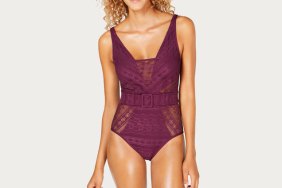The more you shop online, the less you’re shopping in brick and mortar stores, right? That’s why department stores are struggling, almost everyone has an old favorite department store that is now just a nostaglic memory. In order to avoid starring in stories of what going shopping “used to be like,” department stores are upping their online game — and these are the stores doing the best business.
New York University’s Luxury Lab, dubbed L2, recently ranked 40 global department stores and designated 10 of them digital “geniuses” based on their online presence. They analyzed Web sites, digital marketing, mobile and social media. Not too surprisingly, Nordstrom came out on top. Anecdotally, a lot of us know more people who shop Nordstrom online who may never have shopped in one of their physical locations.
The rest of the top ten? Macys, Saks Fifth Avenue and Marks & Spencer (tied for third), Neiman Marcus, Bloomingdales, Net-a-Porter (designated a department store by the study), House of Fraser, Bergdorf Goodman and John Lewis.
With a few international exceptions, no fashionista is going to be surprised by this list. This syncs up completely with what a lot of us consider the top tier online retailers. They’re the stores that create dynamic content online, use social media effectively and basically reach us where we live — online.
“Fluency and innovation in digital elevate a brand’s relationship with consumers,” says Ari Wolfe, who lead the L2 study. “As user behavior becomes more and more dependent on e-commerce, social media and mobile, it becomes increasingly important for a brand to be interesting, relevant and proficient in all forms of digital.”
Basically, there’s now research to back up what social media professionals have been telling brands for years.
“Department stores are very adept at utilizing various platforms to increase shareholder value—Nordstrom has been a pioneer in in-store pickup from e-commerce, Macy’s continues to invest in mobile apps for both in-store and out-of-store functionality, Saks Fifth Avenue has invested in email campaigns to drive sales,” Wolfe said.
Basically, it reads like a wish list from core customers who love online shopping, though the results didn’t reflect shopper satisfaction specifically.
“Shopper satisfaction is not a direct input in our methodology, though metrics we use such as engagement on social platforms reflect a certain level of satisfaction with a brand’s content,” Wolfe said.
A driving factor in this race for online customer engagement is competition with Amazon. As Maureen Mullen, L2 director of research and advisory, told WWD, “They have to compete with the likes of Amazon and live up to the expectation of two-day fulfillment and almost boundless inventory.”
Of the top 40 stores, 85% have online shopping, 25% have live chat features on their Web sites, 98% have a Facebook page and 18% integrate video on product pages. Different stores attribute their success to different best practices. Nordstrom credits its fulfillment capacity, Macy’s has seen returns from “branded entertainment” like an app to go with the Thanksgiving Day Parade and the ability to purchase items featured on NBC’s Fashion Star. Engaging customers on their “second screen,” their phone, increased sales by 50% over the previous year.








